Hilda Palafox
ARTIST
HILDA PALAFOX (MEXICO CITY, b. 1982)
PINTURA
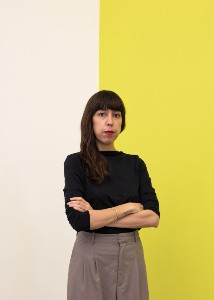
MARZO 2022
El afán de encontrarse a uno mismo
Entrevista con Hilda Palafox
POR REGINA DE CON COSSÍO
Fotografías White Balance, cortesía de Proyectos Monclova
Hilda Palafox trabaja con la representación de la mujer desde la realidad de su cuerpo y su existencia terrenal, desdibujando el halo idealista que le ha sido impuesto a la figura femenina a lo largo de la historia del arte como una musa. La artista comparte cuáles son las referencias que la influyen en su trabajo y la relación que existe entre la representación pictórica y el encuentro con uno mismo.
Regina De Con Cossío: En tus pinturas hay una serie de elementos que nos recuerdan a pintores mexicanos de otras épocas. ¿Cómo relacionas tus piezas con el arte mexicano del siglo XX? ¿Quiénes son tus pintores de referencia?
Hilda Palafox: Definitivamente hay una gran influencia estética del arte mexicano del siglo XX en mi trabajo. Pintura y escultura principalmente. Me gusta la tendencia figurativa y narrativa que la caracteriza. En mi trabajo se ve reflejada en las composiciones que manejo o en el uso de paletas policromáticas, traducidos a mi práctica de forma relajada y actual.
Algunos de los artistas que más me han influenciado son Carlos Mérida, Olga Costa, Ricardo Martínez de Hoyos, Jorge González Camarena y Geles Cabrera o Luis Ortíz Monasterio en escultura, por mencionar algunos.
RDCC: En El afán de encontrarse a uno mismo, ¿a qué disciplinas o métodos recurres para lograrlo? Me imagino que para que uno se encuentre a uno mismo podría pensar en el psicoanálisis, pero también en la confrontación con el otro. ¿Tú cómo lo consigues?
HP: Sí, creo que hay un poco de confrontación diluida entre las líneas que se dibujan dentro de estas piezas. Pero no es mi intención relacionar mi práctica con alguna de estas disciplinas. Pienso que mi trabajo transita principalmente por un lenguaje más instintivo y se basa en inquietudes o emociones que viajan de lo individual o colectivo pero sin necesidad de analizar o brindar respuestas.
RDCC: ¿Qué tan importante es encontrarse a uno mismo como parte del proceso de creación artística?
HP: Para mí es muy importante estar conectada conmigo misma para poder crear y al mismo tiempo crear para conectar conmigo misma. No puede existir una sin la otra.

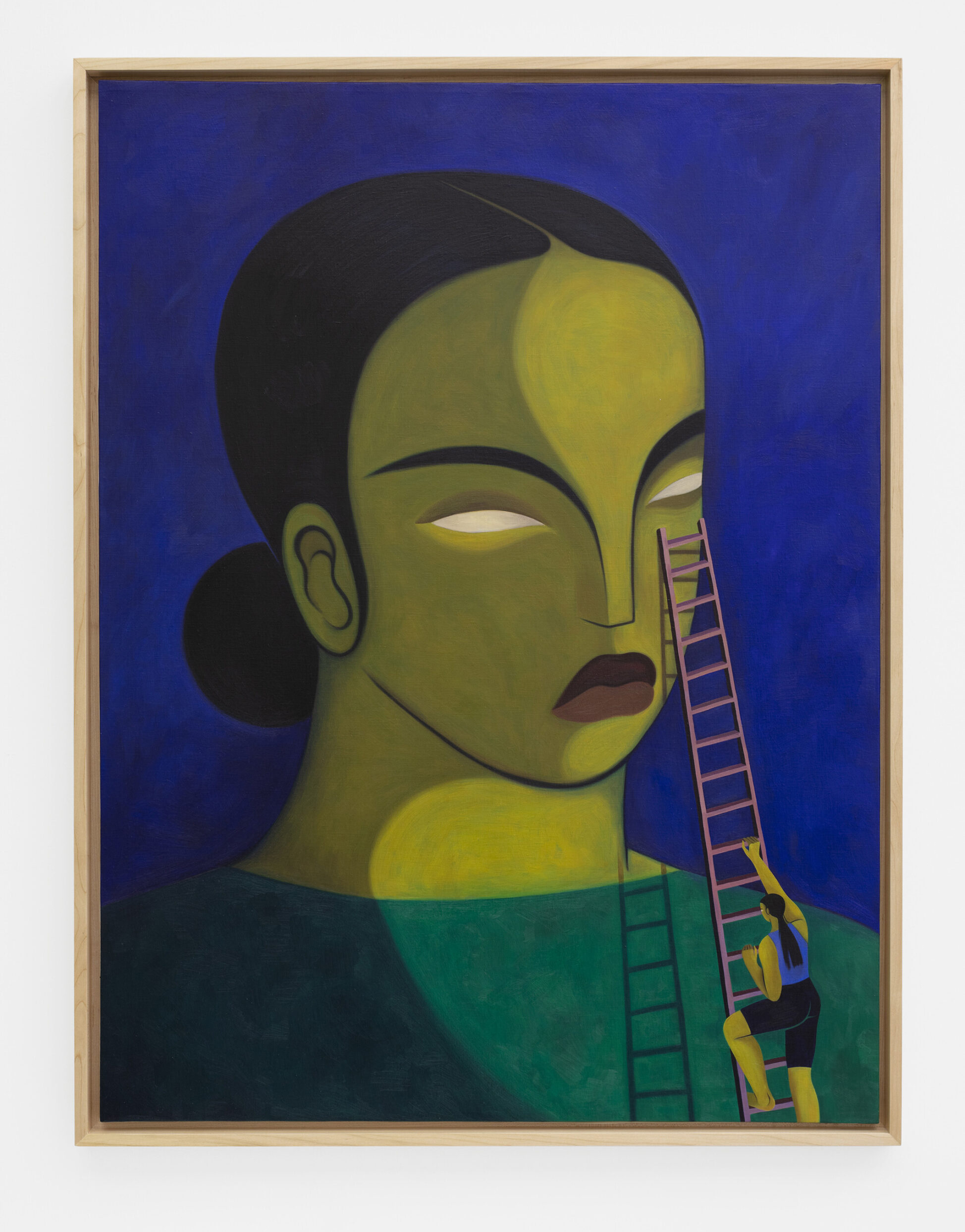

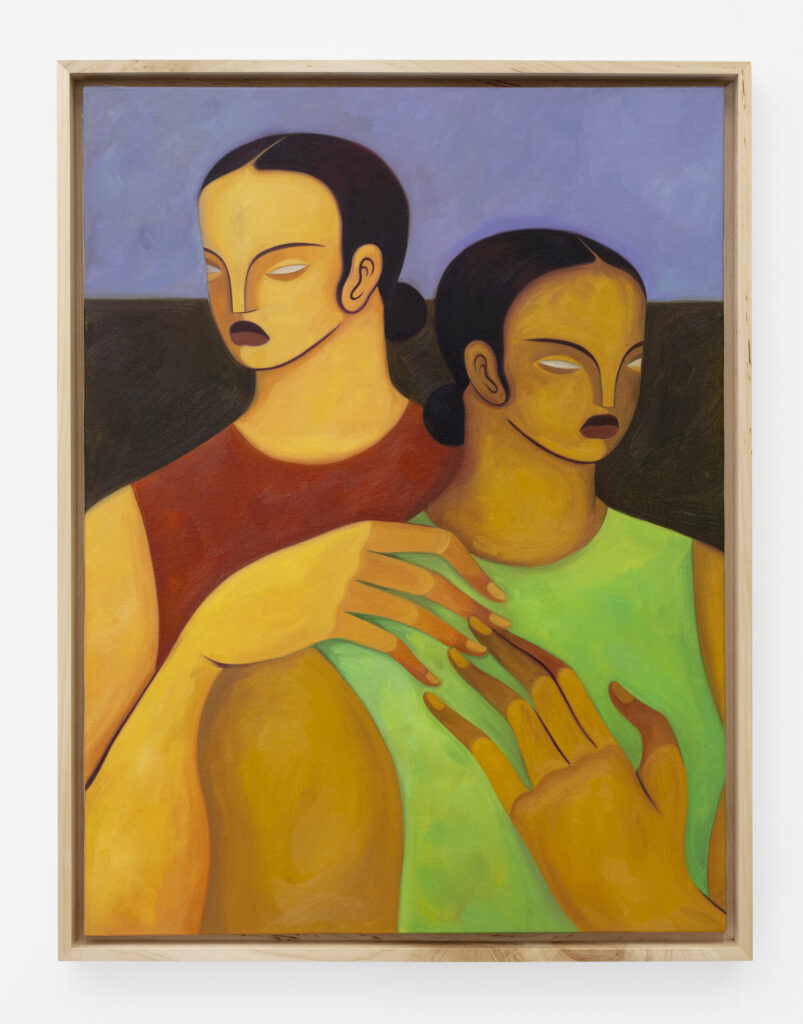
RDCC: Las figuras de tu exposición más reciente son mujeres. ¿Cómo dialoga este propósito con todo lo que ocurre en México alrededor del feminismo?
HP: Me interesa usar la figura femenina como instrumento principal de expresión, para invertir y cuestionar la idea habitual de la mujer como simple musa y proyectarla hacia un lenguaje más terrenal, más real. Crear un diálogo que reflexione sobre la construcción de la subjetividad femenina.
RDCC: En la descripción de tu exposición más reciente se habla de la arquitectura como una disciplina fundamental en tu producción artística y como una alegoría de la mente. ¿Cómo concibes esta relación entre arquitectura y arte en tu proceso de producción?
HP: Me gusta crear escenarios ambiguos que sitúen a estos personajes en una espacio atemporal. Usar la menor cantidad de elementos para dar una sensación de espacio, donde una simple línea crea un horizonte que contiene o expande, física y mentalmente.
The eagerness to find oneself
Hilda Palafox works with the representation of women from the reality of her body and her earthly existence, blurring the idealistic halo that has been imposed on the female figure throughout the history of art as a muse. In this conversation, Palafox shares with us the references that have influenced her work and the relationship between pictorial representation and the process of finding oneself.
Regina De Con Cossío: In your paintings there are a series of elements that remind us of Mexican painters from other times. How do you relate your pieces to Mexican art of the 20th century? Who are your reference painters?
Hilda Palafox: There is definitely a strong aesthetic influence from 20th century Mexican art in my work. Mainly painting and sculpture. I like the figurative and narrative trend that characterizes it. In my work it is reflected in the compositions that I handle or in the use of polychromatic palettes translated into my practice in a relaxed and current way.Some of the artists that have influenced me the most are Carlos Mérida, Olga Costa, Ricardo Martínez de Hoyos, Jorge González Camarena and Geles Cabrera or Luis Ortíz Monasterio in sculpture, to name a few.
RDCC: In the desire to find oneself, what disciplines or methods do you use to achieve it? So at first I imagine that for one to find oneself one could think of psychoanalysis, but also of confrontation with the other. How do you get it?
HP: Yes, I think there is a bit of diluted confrontation between the lines that are drawn within these pieces. But it is not my intention to relate my practice to any of these disciplines. I think that my work moves mainly through a more instinctive language and is based on concerns or emotions that travel from the individual or collective but without the need to analyze or provide answers.
RDCC: In the eagerness to find oneself, what disciplines or methods do you use to achieve it? Off the top of my head, I imagine that a person can find oneself through psychoanalysis but also through confrontation with the other. How do you get it?
HP: Yes, I think there is a bit of diluted confrontation between the lines that are drawn within these pieces. But it is not my intention to relate my practice to any of these disciplines. I think that my work moves mainly through a more instinctive language and is based on concerns or emotions that travel from the individual or collective but without the need to analyze or provide answers.
RDCC: How important is finding oneself as part of the artistic creation process?
HP: For me it is very important to be connected with myself to be able to create and at the same time I have to create to connect with myself. There can not be one without the other.

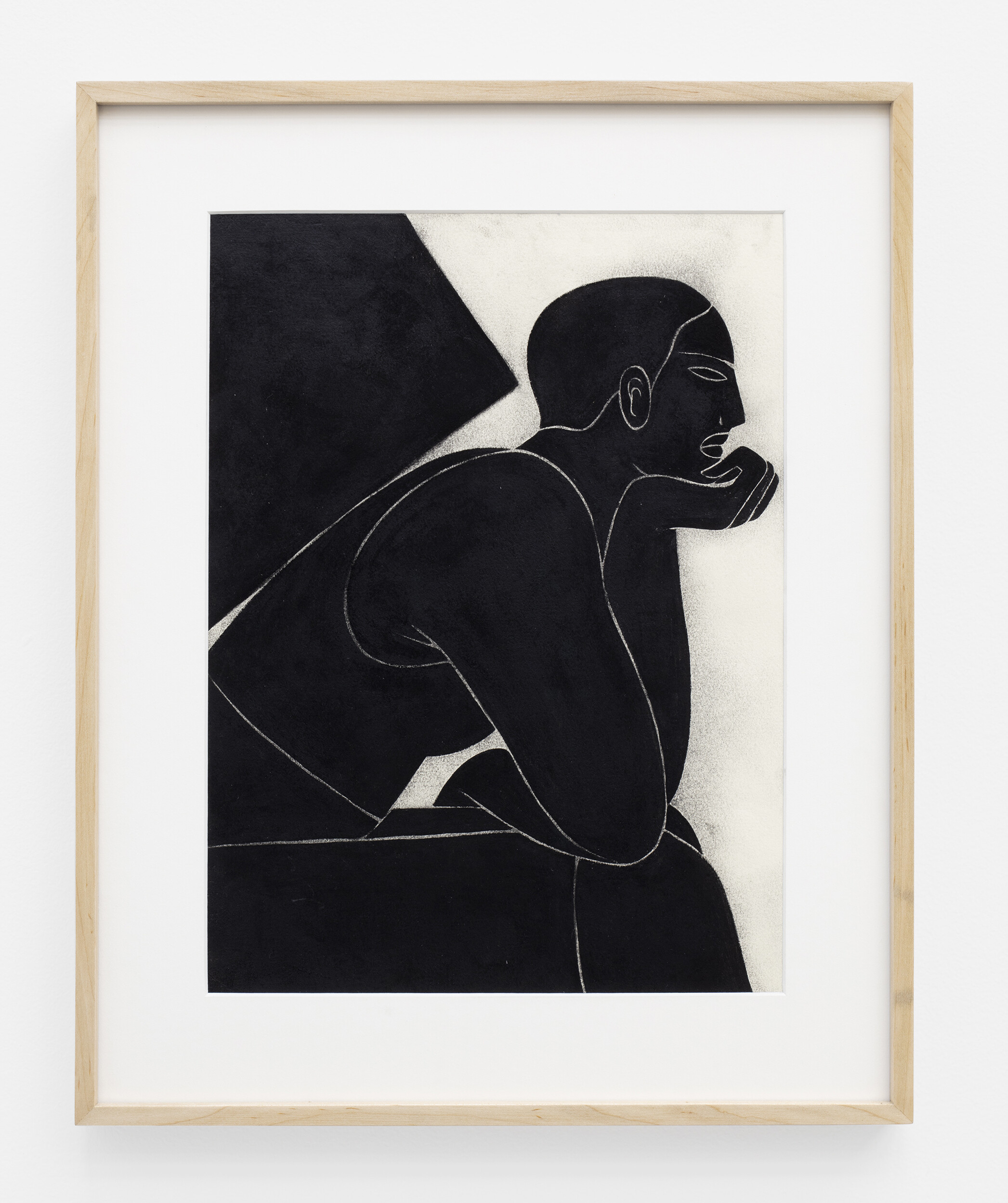
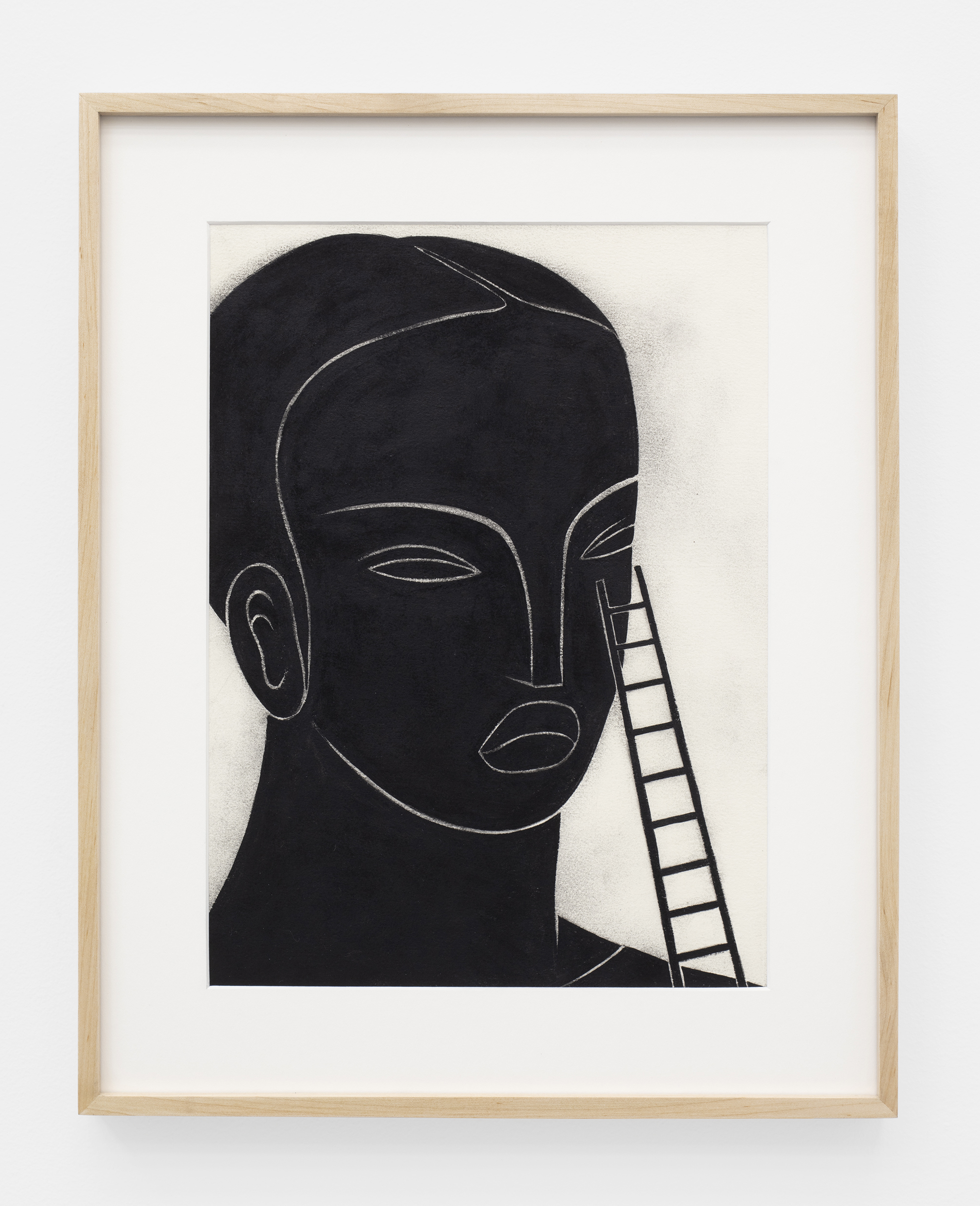
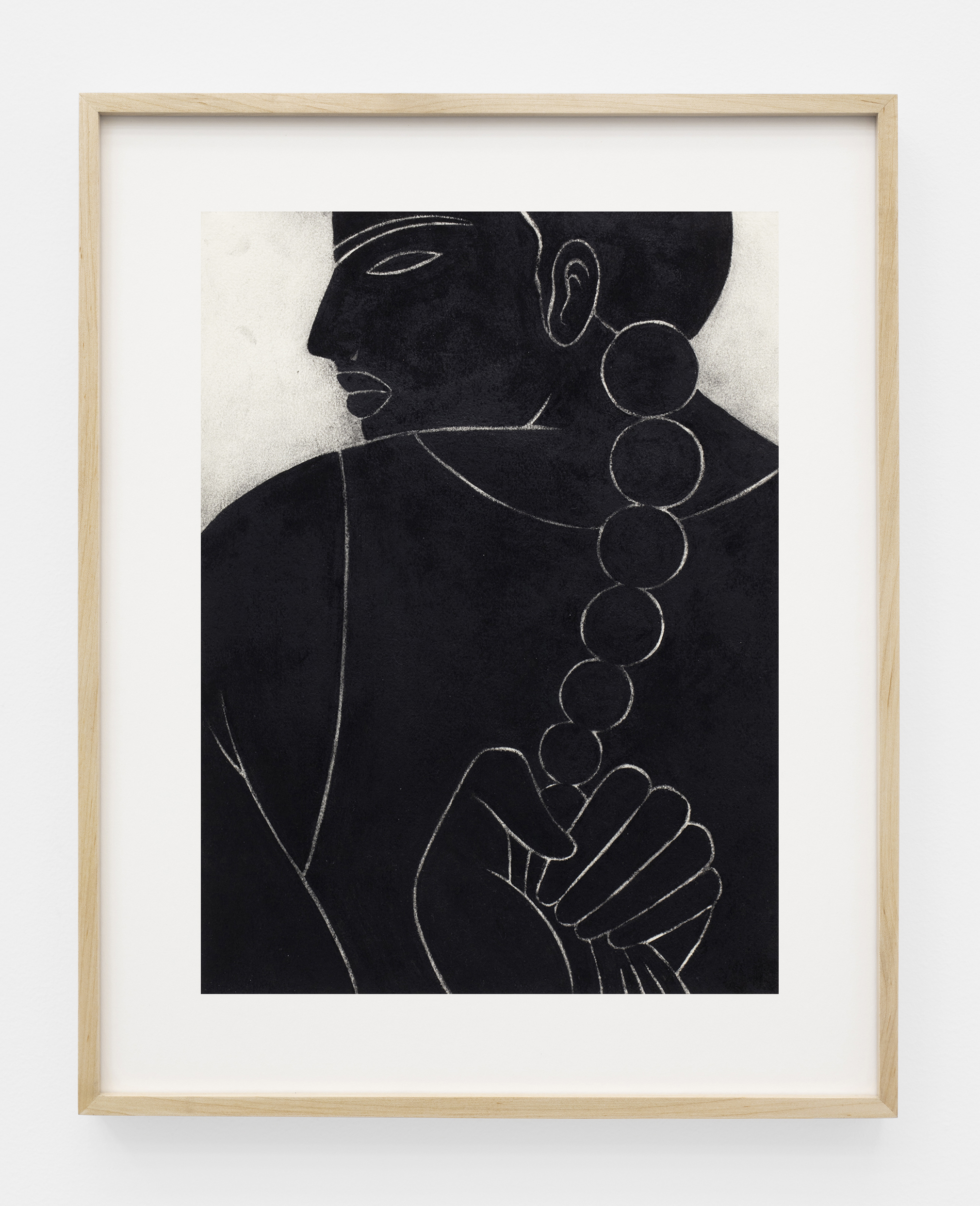
RDCC: The figures in your most recent exhibition are women. How does this purpose dialogue with everything that happens in Mexico around feminism?
HP: I am interested in using the female figure as the main instrument of expression; to invert and question the usual idea of women as a simple muse and project it towards a more earthly and more real language. Create a dialogue that reflects on the construction of female subjectivity.
RDCC: The description of your most recent exhibition speaks of architecture as a fundamental discipline in your artistic production and as an allegory of the mind. How do you conceive this relationship between architecture and art in your production process?
HP: I like to create ambiguous settings that place these characters in a timeless space. Using the fewest number of elements to give a sense of space, where a simple line creates a horizon that contains or expands, physically and mentally.


